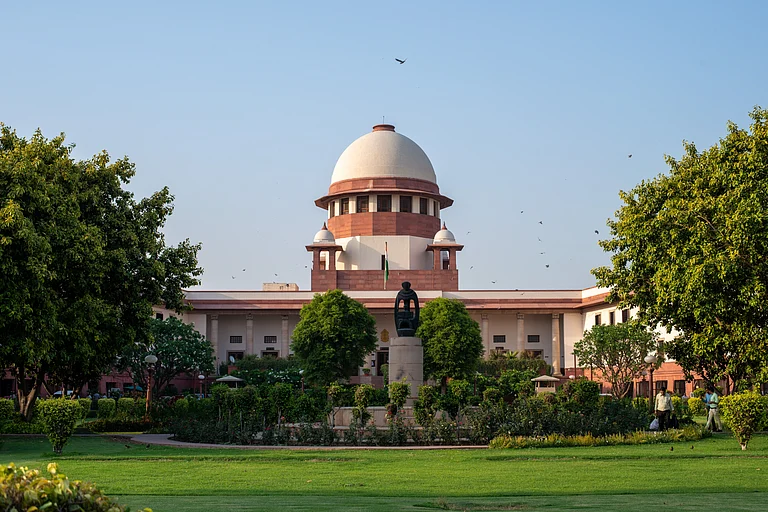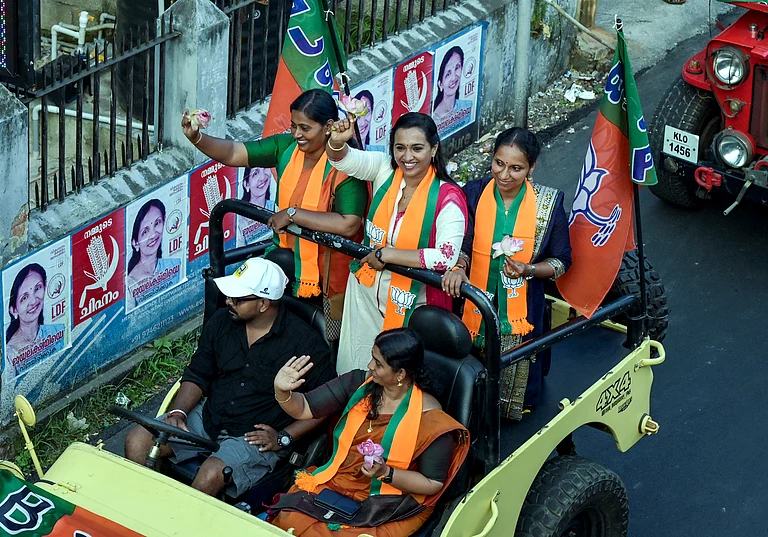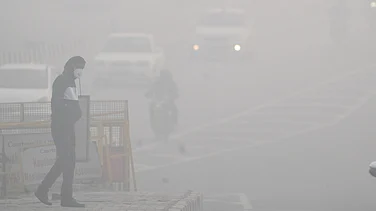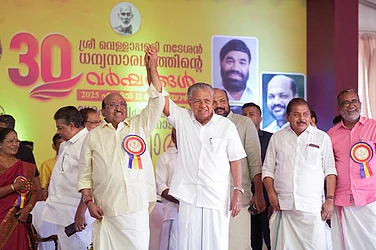Ever wondered why Lok Sabha MPs in Madhya Pradesh cater to a population of 25 lakh on an average —29 MPs for a population of 7.26 crore, going by the census of 2011— whereas an average MP in Tamil Nadu has to work for a population of 18.5 lakh, with 39 MPs serving a population of 7.21 crore?
It’s because the number of Lok Sabha seats that each state is allocated is on the basis of the census of 1971, when both the states had their fair share of representation. Till then, India was following the policy of proportional representation, as enshrined in the Constitution of India. Madhya Pradesh —excluding the part that was later carved out to form Chhattisgarh— with 5.47 per cent of the country’s population in 1971 was allotted 5.34 per cent of the 543 Lok Sabha seats. Tamil Nadu, with a population share of 7.51 per cent, got a 7.18 per cent share of Lok Sabha seats.
However, between 1971 and 2011, Tamil Nadu’s population has increased 1.75 times, much lower than the national average of 2.2 times, whereas the population of Madhya Pradesh has grown 2.41 times.
Going by the 2011 Census, Madhya Pradesh’s share in India’s population rose to 6 per cent, while Tamil Nadu’s has dropped to 5.95 per cent. If Lok Sabha seats were allotted now as per the 2011 state population, both states should have had around 32 Lok Sabha seats. That would leave MPs with an almost equal range of the population to cater to. But this would also mean a loss of about seven Lok Sabha seats for Tamil Nadu and a gain of three seats for Madhya Pradesh.
In Uttar Pradesh, India’s largest state, the population grew 2.38 times during this period. The state —excluding the Uttarakhand region— is home to 15.3 per cent of India’s population in 1971. It was allocated 14.73 per cent of India’s Lok Sabha seats. In 2011, Uttar Pradesh’s share of the population stood at 16.5 per cent. A population-linked delimitation would have already given the state around 87 seats, instead of the current allocation of 80.
Rajasthan recorded an even higher growth rate — its population increased 2.66 times between 1971 and 2011. In contrast, West Bengal, where the BJP and other Sangh Parivar organisations have made the population influx due to migration of Hindu ‘refugees’ and Muslim ‘infiltrators’ from Bangladesh into one of their key political issues, recorded a 2.06-times increase. Assam, a state that witnessed a violent reaction to population growth due to migration, recorded a 2.13-fold increase. West Bengal would have lost two Lok Sabha seats if the 2011 census report was considered.
This is a scenario full of complexities that the Government of India will have to deal with when the freeze on population-linked delimitation ends in 2026 — whether to re-impose it or not. Both have their own implications that are not easy to deal with.
Experts say that Kerala’s share in the divisible pool of the central taxes is being drastically reduced, mainly because of their success in population control.
In 1976, during the Emergency, the Indira Gandhi government imposed this freeze on redrawing Lok Sabha seat boundaries based on population to encourage the national population control policy her government had just launched.
Allowing population-based seat share would be detrimental to the interest of population control initiatives, the government argued. The 25-year freeze ended in 2001 and thereafter Atal Bihari Vajpayee’s government re-imposed the freeze for another 25 years.
Now that the time for reconsidering the freeze is coming closer, southern states have already started crying foul against the possibility, arguing that allotting seats based on population would be a great injustice to states that have excelled in population control.
On the other hand, continuing with the existing system could mean fewer resources for states with high population growth rates. Whether the people of those states should be punished for the failures of their governments in effectively popularising family planning is another debate — as it’s often those at the lowest strata of the society who bear the brunt for policy failures.
South vs North
“South India will become like the Northeast,” says Aazhi Senthilnathan, a Chennai-based writer and language activist.
He further says, “North-eastern states hardly get heard because their representation in Parliament is negligible. If population-based delimitation is implemented, southern states will lose their voice. India will become overwhelmingly north-centric and it will lead to a situation where the south will become a permanent minority in Parliament.”
If such a population-based delimitation takes place, the redrawing of parliamentary constituencies will take place based on the census of 2031. In a March 2019 article, titled “India’s Emerging Crisis of Representation” by Milan Vaishnav and Jamie Hinston, the researchers —associated with the Carnegie Endowment for International Peace— tried to give an estimate of the change in state-wise seat allocation should such delimitation take place.
According to their estimate, by 2026, the five southern states of Tamil Nadu, Kerala, Andhra Pradesh, Telangana, and Karnataka are to cumulatively lose 26 Lok Sabha seats, while Uttar Pra¬desh, Bihar, Madhya Pradesh, and Rajasthan —states that make up the Hindi heartland— would gain 31 seats. Tamil Nadu and Kerala would be the biggest losers with eight seats each.
In effect, the total South Indian representation would come down from 129 seats to 103 and Uttar Pradesh, Madhya Pradesh, Bihar, and Rajasthan’s total seats would increase from 174 to 205.
Among the eastern states, West Bengal would stand to lose four seats and Odisha three, while Jharkhand would gain one, they estimated.
Senthilnathan believes that the Government of India, instead of reducing the seats of any state, may go for increasing the number of seats in states with high population growth.
He says, “Given that India’s new Parliament building has a seating capacity of over 800 Lok Sabha members, it is likely that the government would increase seats instead of reducing any state’s quota. However, that would make no difference. If the number of seats in Uttar Pradesh is raised to over 100 to keep Tamil Nadu’s quota of 39 intact, it would result in the same loss of representation.”
Nilakantan R S, a scholar in data science and author of the book South vs North thinks that population-based delimitation would be akin to “punishing south Indian states for sending girls to school, for having social movements that helped in women empowerment and other socio-economic developments”.
According to him, the southern states’ achievements in reducing population growth were not because of the Union government’s campaign, but because of the achievements made in the field of women’s education. The number of children tends to come down if there is a greater level of education among women, he says.
Data provides credence to his arguments. According to the latest National Family Health Survey (NFHS-5), Kerala continues to retain the top rank in several indicators of social progress and women empowerment, such as literacy, infant mortality, maternal mortality, and higher education of women.
Delimitation based on population would be akin to punishing southern states for sending girls to school, for having social movements that helped women.
As much as 97.4 per cent of Kerala’s women are literate and 77 per cent of them have been educated for 10 or more years. In contrast, the national average of women who went to school for 10 or more years is only 41 per cent. According to NFHS data, only 6.3 per cent of Kerala women in the age group of 20-24 have got married before the age of 18, whereas the national average is 23 per cent.
The total fertility rate (number of children per woman or TFR), which is a key indicator of measuring the growth in population control, is 1.8 in Kerala, which is well below the national average. The practice of childbirth at home has become a story of the past in Kerala, with 99.8 per cent of childbirths recorded as institutional births. Besides, 61 per cent of Kerala women use family planning methods.
A similar story is seen in Tamil Nadu, where 84 per cent of women are literate and 57 per cent of them have been educated up to the 10th standard or more. The TFR is the same as Kerala’s and 99.6 per cent of childbirths happen in healthcare institutions.
An example of the correlation between the TFR and the level of education is that in Andhra Pradesh, the TFR among women having education only up to primary level is 2.1, and the same among women with 10 years of schooling is 1.9, while the TFR is only 1.1 among women who are graduates and above.
Take the case of Rajasthan, the state that recorded the highest growth rate since 1971. The TFR among the women in Rajasthan who have education below primary level is 6.8, which falls to 2.9 when women have primary education and goes further down to 1.7 when they have 10 years of schooling. Among women who study till graduation and above, childbirth is not a matter of priority — the TFR is only 0.6 among graduates.
“We strongly object to any move to go for delimitation that is based on the revised population data. When the national population policy was introduced, Parliament gave an assurance to all states that the decline in population would not affect political representation. The Central Government cannot go back on its promise,” says CPI(M) leader Thomas Isaac, former finance minister of Kerala.
Resource Distribution
While what happens with the redrawing of Lok Sabha constituency boundaries remains to be seen, the actual allocation of Union government funds is already taking place based on the population figures of the 2011 census.
The 15th Finance Commission that came into existence in 2017 took a fundamental shift from the previous commissions, as it took the 2011 census data as the ground for the allocation of funds. It was a deviation from the previous commissions that used the 1971 census as the basis.
In February 2021, the Finance Commission argued that the 2011 population data “better represents the present need of states”, but to be fair to, as well as reward, the states which have done better on the demographic front, a 12.5 per cent weightage was assigned to the demographic performance criterion.
Political forces in the south have not bought this argument and West Bengal, too, criticised the move. Last year, Kerala’s finance secretary alleged that the state’s share in the divisible pool of the central taxes was being drastically reduced, mainly because of their success in population control. He alleged that more than 60 per cent of the weightage for such devolution is linked to population.
In 1971, when Kerala’s share of India’s population was 3.89 per cent, the state received 3.87 per cent of the fund allocation during the 10th Finance Commission. By the time of the 14th Finance Commission, it was lowered to 2.5 per cent and, finally, during the 15th Finance Commission, to only 1.92 per cent. This is even lower than the state’s population share—2.75 per cent in 2011.
Kanimozhi N V N Somu, a leader from the Dravida Munnetra Kazhagam (DMK) and a Rajya Sabha MP from Tamil Nadu, had expressed similar concerns in Parliament in December 2022. “Incentivising the laggard states and penalising the diligent ones is ridiculous and unfair,” she said.
Amidst the already-pursuing policy of population-based resource distribution, the distribution of parliamentary constituencies resulting in loss of representation would only make things far worse for the southern states.
This article appeared in Outlook's May 21, 2023 issue titled '1.4 Billion Questions'. It appeared in print as "India's Great Distribution Challenge"


























